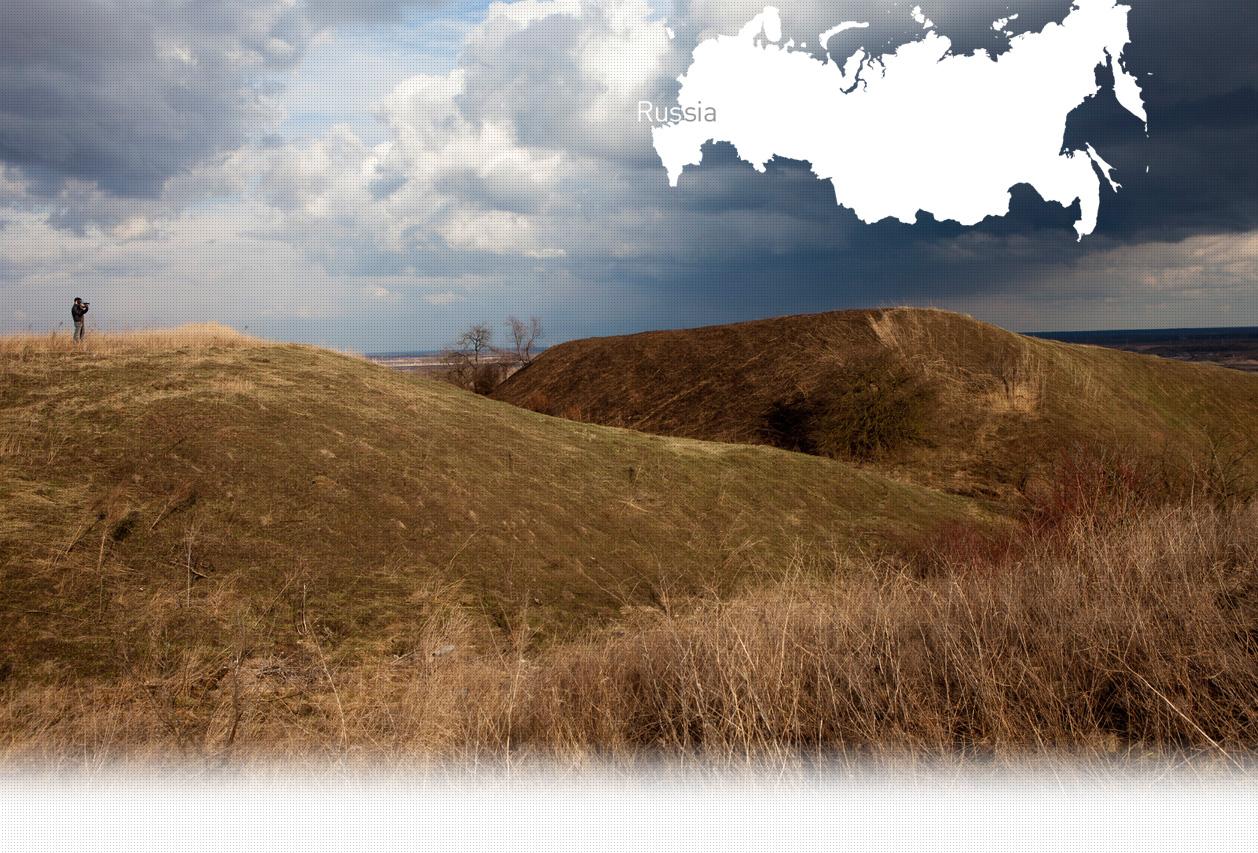

1 Killing site(s)
Viktor T., born in 1935:
"YIU: Before the Germans’ arrival and the evacuation of the kolkhoz, were there any refugees who fled to the west and settled in your village?
W: Yes, there were many, especially Jews. They arrived here before the Germans. They spent the winter here and left. Those who stayed here were either elderly people or those who didn’t have time to leave. They were bombed near Kotelnikovo and brought here. There were teenagers and elderly people among them. I remember the parents crying because during the bombing they lost their son, the sister was crying too. One day, I was walking down the street when I saw a boy coming, he was slightly injured. He asked me if this was the village of Zhutovo and if we had Jews, I answered in the affirmative. I showed him my grandmother’s house in which the Jews lived. When his father saw him, he fell to the ground taken by emotion because his son was alive. How did he stay alive? During the bombing he ran, he was young and managed to escape. When he returned to the scene, he saw the dead bodies. Local people told him that the survivors had been brought here, so he came here. Among the Jews who came here there was an elderly couple who had a very beautiful daughter and this fifteen- or sixteen-year-old boy that I just told you about.
YIU: These Jewish families who came to your village, did they settle in with the people themselves or did the selsoviet give them housing?
W: It was the selsoviet that distributed them among the locals. Before they brought them, they inspected the houses. My parents had six children, so we didn’t house anyone. In my grandmother’s house only my aunt and grandmother lived. They had more space, so they housed a family in their house.
YIU: Do you know where they came from, from Ukraine or elsewhere?
W: They were from Zhytomyr from what they told us." (Witness n°616R, interviewed in Zhutovo-I, on November 22, 2015)
"During the German-Fascist occupation, I was arrested together with the Jewish population of the village of Zhutovo-I. At that time, 30 Jews - exclusively women and children - were loaded into a special type of truck: it was covered and closed hermetically. I, however, was not loaded into this truck. On the orders of the German officer, a German soldier hit me several times on the head. I know that this special type of truck was nothing but a means of extermination. This was obvious, because once the citizens were loaded and the door was hermetically closed, the air could no longer enter the truck. [...] Loaded truck left in the direction of the village of Kamenka. […]
German-Fascist troops massacred Jewish refugees evacuated from other regions in our village. All the Jews, with their children and belongings, were gathered in a school under the pretext of being sent to work. On October 8, 1942, they were transported by truck to the ravine "Kamennaya balka" located 1.,5 km from the village of Kamenka, where these innocent civilians were shot, including the children. Those who resisted and refused to enter the truck were beaten with batons and pushed in by force. According to our calculations, a total of 125 people were shot, including 84 residents of the village of Kamenka. The rest were brought from other villages. After the massacre, the German soldiers and officers shared the victims’ belongings in the street in front of the school." [Act drawn up by Soviet Extraordinary Commission (ChGK); GARF: Fond 7021, Opis 45, Delo 3/RG 22.002M, Reel 10(III) p. 23-77]
Kamenka and Zhutovo I are Russian towns located 110km (72mi) southwest of Volgograd. The villages were founded as khutory [settlements] in 1816. In 1914, several hundred people lived there. The local population was mainly involved in agriculture. There is no information regarding the Jews who lived in these towns before the war. When WWII broke out, dozens of Jewish refugees from Nazi-occupied Ukraine settled in the area. Some of them managed to escape the occupation by moving to the east before the Germans arrived.
Kamenka, Zhutovo, and surrounding villages were occupied by the Germans in August 1942. After the occupation began, the remaining Jews in Kamenka, Zhutovo, and Kovalevka were exterminated during two mass executions conducted in a ravine located 1.5km away from Kamenka.
The first execution took place on August 10, 1942, when 22 Jews were rounded up in Kamenka and shot by the Germans. Romanian soldiers helped the Germans carry out the killings. The second execution was carried out on October 8, 1942. About 164 Jewish women and children from surrounding villages were gathered in the selsoviet building before being taken on trucks towards the ravine, where they were shot.
Do you have additional information regarding a village that you would like to share with Yahad ?
Please contact us at contact@yahadinunum.org
or by calling Yahad – In Unum at +33 (0) 1 53 20 13 17